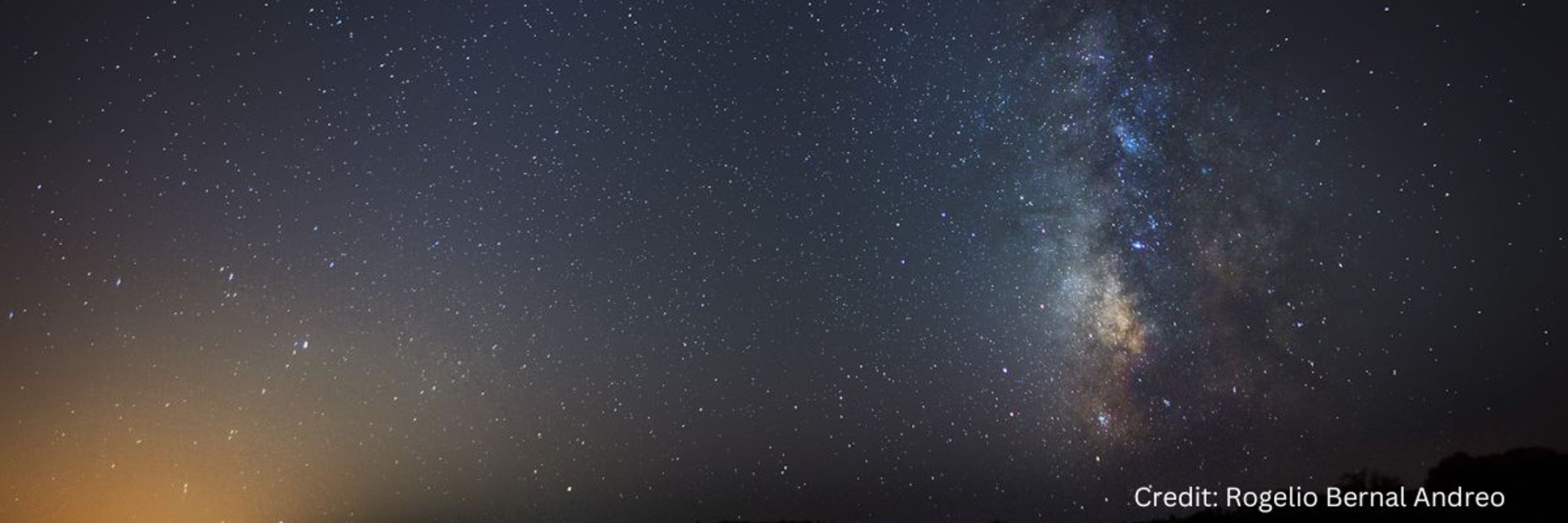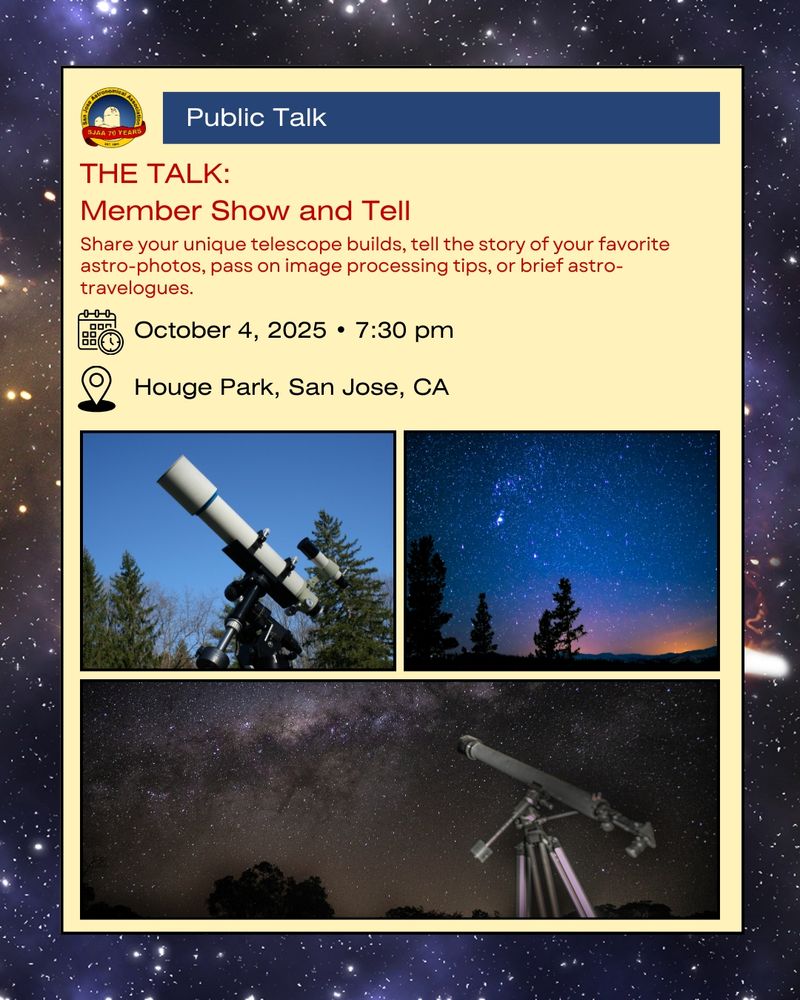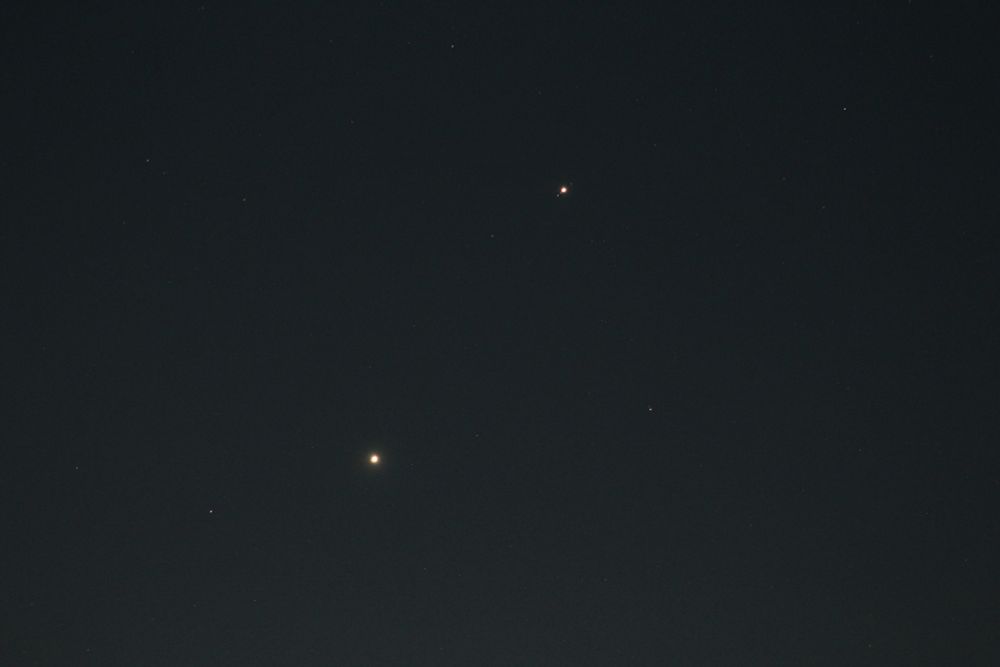San Jose Astronomical Association
@sjastronomy.bsky.social
600 followers
60 following
90 posts
We are the San Jose Astronomical Association, bringing astronomy and science to the people of San Jose, the SF Bay Area, and beyond. Come explore the cosmos with us at a star party! 🚀🌙✨🌞🛰🌌🔭 sjaa.net
Posts
Media
Videos
Starter Packs
Pinned
Reposted by San Jose Astronomical Association
Reposted by San Jose Astronomical Association
Reposted by San Jose Astronomical Association
Reposted by San Jose Astronomical Association














